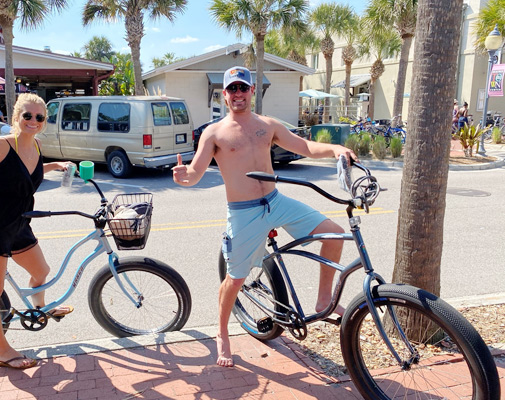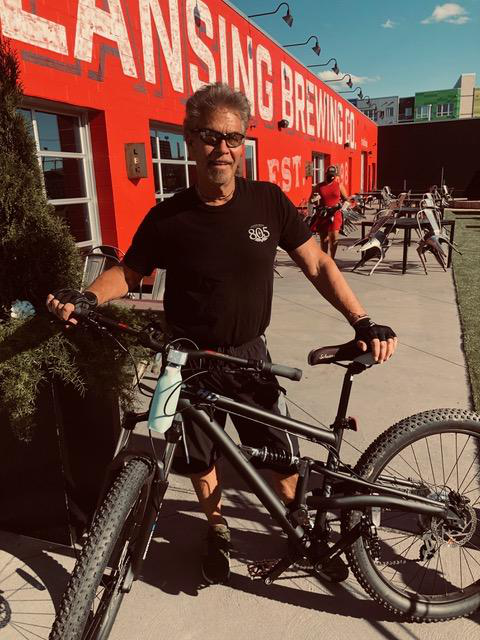Ask any runner nursing sore knees, a swimmer looking to boost endurance, or a weightlifter wanting more stamina in the gym, and you’ll hear the same frustration: one form of exercise rarely meets every need. That’s where cycling comes in. The beauty of adding the bike to your routine lies not only in the variety but in the science-backed benefits it delivers. Whether cruising through the park, climbing mountain trails, or speeding down city streets, cycling for cross-training bridges the gap between performance, recovery, and enjoyment.
Why Cross-Training Matters
Cross-training isn’t just about shaking up a routine; it’s about building a body that’s resilient, balanced, and versatile. When you stick to one sport, the repetitive strain on certain muscles and joints can lead to injury. Cycling offers a low-impact alternative that develops cardiovascular strength while giving overused muscles a break. Runners gain stamina without pounding pavement, swimmers improve lung capacity outside the pool, and strength athletes enhance endurance without sacrificing muscle.
Unlike other forms of exercise, cycling adapts to your level and goals. Want intensity? Take on a hilly climb. Need recovery? Spin lightly on flat ground. With every pedal stroke, you’re tailoring your workout to complement what you already do.

The Power of the Road Bike for Runners
For runners, the challenge is endurance and repetitive impact. Over time, this strain can wear down joints and ligaments. A Road Bike provides the perfect solution. Its lightweight frame and aerodynamic design mimic the endurance demands of long-distance running without the high-impact toll. Training on a road bike helps runners extend cardiovascular capacity, build leg strength, and train at a sustained pace.
Many runners use cycling during recovery weeks to maintain fitness while reducing injury risk. The rhythm of pedaling also helps maintain cadence awareness, a key crossover skill that improves running form.
How a Hybrid Bike Balances Workouts for Everyday Athletes
Not every athlete is chasing podiums or marathon medals. Many simply want a balanced, active lifestyle. A Hybrid Bike combines the efficiency of a road bike with the comfort of a casual ride, making it the ideal cross-training option for gym-goers or recreational athletes.
Cycling on a hybrid bike engages large muscle groups like quads, glutes, and calves while also improving heart health. For weightlifters, this translates into stronger endurance and quicker recovery between sets. For yoga or Pilates enthusiasts, hybrid rides support flexibility by gently working joints without over-stressing them.

Why Swimmers Thrive on a Gravel Bike
Swimming is a sport of rhythm, lung control, and core stability. Cross-training on a Gravel Bike complements this by demanding balance and adaptability on mixed terrain. Gravel bikes are versatile — equally at home on paved roads and dirt trails.
This adaptability trains stabilizing muscles that swimmers don’t typically engage in the pool. More importantly, gravel riding enhances aerobic conditioning in ways that translate directly to longer pool sessions or open-water swims. The variety of terrain also prevents mental fatigue, much like switching strokes in the water.
Building Raw Power with a Mountain Bike
For athletes seeking explosive power — think weightlifters, CrossFit enthusiasts, or even sprinters — a Mountain Bike is the ultimate cross-training partner. Navigating trails requires bursts of strength to climb steep inclines, combined with technical skills to handle descents.
Mountain biking engages the core, upper body, and fast-twitch muscle fibers in ways few cardio workouts can match. The coordination required improves balance and stability, which pays dividends in any athletic arena. For lifters especially, mountain biking supports cardiovascular health without diminishing strength gains.

All-Terrain Benefits of the Fat Bike
When the weather turns snowy or sandy, most athletes retreat indoors. But the Fat Bike changes that. With oversized tires designed for traction on loose or soft surfaces, fat bikes allow year-round outdoor training.
The resistance from pedaling on snow or sand translates into significant strength building for the legs and cardiovascular endurance. For cross-training, this keeps athletes consistent even in the off-season. Mentally, riding a fat bike is a refreshing change of pace that helps prevent burnout — a challenge many athletes face when locked into rigid gym routines.
Recovery Rides on a Beach Cruiser
Cross-training isn’t always about pushing limits. Sometimes the best training tool is recovery itself. A Beach Cruiser is ideal for this. With its upright seating, wide tires, and relaxed design, it promotes gentle movement that increases blood flow without stressing muscles.
For athletes recovering from intense training blocks, beach cruiser rides function as active recovery — lowering stress hormones, improving circulation, and even boosting mood. It’s training that feels more like leisure, and that psychological break is just as important as the physical one.
The Mental Edge of Cycling for Cross-Training
Cross-training isn’t just about physical benefits; the mental gains are just as powerful. Cycling outdoors provides fresh scenery, breaks monotony, and stimulates mental focus in ways treadmill or pool laps can’t. Studies link cycling with lower stress, improved mood, and better cognitive function. For athletes, this translates into stronger discipline, reduced burnout, and renewed motivation across all sports.
Whether you’re cruising on a hybrid through your neighborhood, grinding gravel trails, or spinning a fat bike through snow, the mental reset amplifies your performance back at the gym, pool, or track.
Why Cycling Outshines Other Cross-Training Tools
Ellipticals, rowing machines, and stair climbers all have their place. But cycling offers unmatched flexibility, variety, and long-term benefits. Unlike stationary tools, it allows athletes to adapt intensity, choose terrain, and even enjoy social or group rides. More importantly, cycling can be done for life. While some training methods lose practicality with age, the low-impact nature of cycling ensures it remains accessible and effective for decades.
Conclusion: Take Training Beyond the Gym
The most effective athletes know that success isn’t about pushing harder in one lane, but about training smarter across many. By incorporating cycling into your routine, you’re building endurance, protecting your body from overuse, and unlocking fresh energy for your main sport. And with the right bike — whether it’s a road bike for endurance, a mountain bike for power, or a beach cruiser for recovery — you’ll find cross-training feels less like work and more like joy.
Take your training to the next level and explore the unmatched benefits of cycling. From hybrids to fat bikes, Bikesdirect.com offers a ride for every athlete and every goal. Shop today and find the bike that turns your cross-training routine into your favorite part of the week.


